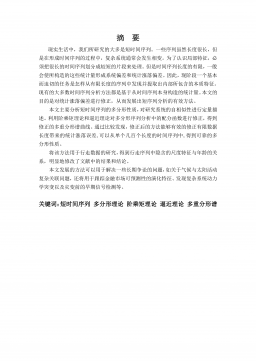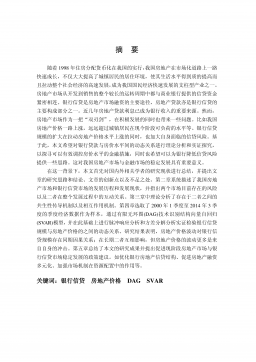有序介孔半导体光催化材料的可控制备及其光还原CO2利用研究
VIP免费
有序介孔半导体光催化材料的可控制
备
及其光还原 CO2利用研究
摘 要
众所周知,煤、石油、天然气等矿石燃料的大量使用,一方面导致矿石燃料储
存量的锐减,造成能源危机,影响人类的可持续发展;另一方面导致大气中以
CO2为主的温室气体的急剧增加,而大气中CO2的增加可引起温室效应、极冰溶化、
海平面上升和生态系统物种组成变化等环境问题。因此,CO2的捕集、储存、资源化
已经引起了人们的重视。其中光催化还原CO2的方法是通过利用太阳能把CO2还原
为碳氢化合物,这不仅可有效降低大气中CO2的含量,而且所产生的碳氢化合物还
可以缓解能源危机,一举两得,从而引起了科学工作者的广泛关注。
CO2属于共价化合物,具有稳定的结构,所以CO2的还原需要额外补充足够的
能量。光催化还原CO2是以清洁的太阳能作为能量的补充,不存在二次污染,是解
决上述难题的好办法。当前,光催化还原CO2的研究重点主要集中于高效稳定的光
催化剂的制备。介孔材料具有高的比表面积,大的孔容以及孔结构的开放性等优
点,在CO2吸附以及光催化还原方面都具有潜在的应用。因此,本文在文献调研的
基础上,设计和制备新型的介孔催化剂材料,包括金属元素Cr掺杂的有序介孔
CeO2光催化材料、有序介孔石墨相氮化碳(meso-g-C3N4)及其复合材料,并进行光
催化还原CO2的应用研究。
全文共分为四章。
第一章为绪论部分,主要介绍了介孔材料的分类、合成机理、制备方法和应用,
氮化碳的概述、石墨相氮化碳作为光催化剂的应用和介孔石墨相氮化碳的制备方
法,光催化还原CO2的机理、介孔材料在光催化还原CO2方面的应用等内容。
第二章介绍了 Cr 掺杂的有序介孔 CeO2催化剂材料的制备、表征以及其在光催
化还原 CO2中的应用。催化材料的制备,以金属硝酸盐为前驱物,SBA-15 为硬模
板,通过纳米铸造(nanocasting)法合成 Cr 掺杂的有序介孔 CeO2材料。采用包括
X射线衍射(XRD)、氮气吸附-脱附(N2 adsorption-desorption)、紫外可见漫反
射(UV-Vis DRS)及透射电子显微镜(TEM)等表征手段对材料的物理化学性质
依次进行测试,并研究了所制备的光催化剂材料的光催化还原 CO2的性能。实验
结果表明,Cr 掺杂的有序介孔 CeO2材料,具有很好的二维六方介孔结构和高的
比表面积以及单一的孔径尺寸。当 Cr 的摩尔掺杂量达到总摩尔量的 15%时,光催
化效果最好,经过 7 h 光催化反应后,CO 和CH4的产量分别为2700 μmol/g·cat.和
1400 μmol/g·cat.。
第三章介绍了有序介孔石墨相氮化碳(meso-g-C3N4)及其复合材料的制备、
表征和其光催化还原 CO2的性能。本实验中,以三聚氰胺为石墨相氮化碳的前驱
物,豆油为碳的前驱物,以 KIT-6 为硬模板,通过化学气相沉积法(CVD)制备
有序介孔石墨相氮化碳(meso-g-C3N4)和其复合材料,有序介孔石墨相氮化碳/
碳(meso-g-C3N4/C)。采用包括 X射线衍射(XRD)、氮气吸附-脱附(N2
adsorption-desorption)、紫外可见漫反射(UV-Vis DRS)以及透射电子显微镜
(TEM)等手段对材料的物理化学性质进行测试,所制备的催化剂被用于 CO2光
催化还原。实验结果表明,有序介孔石墨相氮化碳/碳(meso-g-C3N4/C)具有很好
的光催化还原 CO2的性能,经过 7 h 的反应,meso-g-C3N4/C 产生的 CO 量为 12
mmol/g·cat.,分别是meso-g-C3N4和bulk-g-C3N4的4倍和6倍。
第四章主要为全文的总结以及对于研究领域的展望。
关键词:二氧化碳 光催化还原 介孔材料 氧化铈 石墨相氮化碳
ABSTRACT
It is well-known that the large scale usage of fossil fuel (coal, petroleum, natgas
et.al) can lead to the sharp increase of green gases, which are mainly consisted of CO2,
and can induce many problems, such as greenhouse effect, melting polar ice, sea level
rise and the change of species and so on. Hence, the capture, storage and recycling of
CO2 have arisen much attention of many countries. Among lots of methods, the method,
photocatalytic reduction of CO2 via converting CO2 into hydrocarbon under solar light
irradiation, not only decrease the amount of CO2, but also solve the energy crisis, which
has been attracted the focus of many research scientists.
As covalent compound, CO2 has a very stable structure. Therefore, the reduction of
CO2 requires extra supplement of energy. Photocatalytic reduction of CO2 employs solar
energy as the energy supplement, and the major process is the preparation of efficient
photocatalyst. Mesoporous materials with high specific surface area, large pore volume
and open structure of pore can be potentially used in the field of CO2 adsorption and
CO2 photocatalytic reduction. But, the ordinary silicon-based mesoporous materials
with few active sites and are not suitably used as catalysts directly. So, the synthesis of
new type mesoporous materials for photocatalyst is attracted much attention. Compared
to silicon-baced mesoporous materials, new type non-silicon baced mesoporous
materials have researched for a short time and preparation method is not perfect. Hence,
the preparation of new type mesoporous materials and its potential application need
advanced research. So, after consulting a large number of papers, we chose non-silicon
mesoporous materials as our object of study, including the study of metallic oxide
mesoporous materials and non-metallic polymer mesopporous materials. The thesis
composes four chaptures.
Chapter 1 briefly describe the development, classification, preparation method of
mesoporous materials and their application. Also, the mechanism and application of
photocatalytic reduction of CO2 over mesoporous materials are introduced.
Chapter 2 recommends the preparation, characterization and CO2 reduction under
UV light of Cr-doped mesoporous CeO2. In this chapter, Cr-doped mesoporous CeO2
were synthesized via nanocasting method, using metal nitrates and SBA-15 as
precursors and hard-template, respectively. Techniques including XRD, N2 adsorption-
desorption, UV-Vis DRS and TEM-HRTEM were used to characterize the
physicochemical property of as-prepared mesoporous materials. The photocatalytic
reduction activity of CO2 over Cr-doped mesoporous CeO2 was also conducted. The
results demonstrated that all mesoporous materials exhibited perfect 2D structure, high
specific surface area and uniform pore diameter. With increasing the molar content of
Cr to 15%, the photocatalyst (Mes-CrCN-15) exhibited the high photocatalytic
reduction activity of CO2 and the yield mount of CO and CH4 were 2700 μmol and 1400
μmol respectively after 7 h illumination.
In Chapter 3, meso-g-C3N4 /C were synthesized via chemical vapor deposition
method using KIT-6 as hard template, melamine as g-C3N4 precursor and soybean oil as
carbon precursor. And bulk-g-C3N4 and meso-g-C3N4 also synthesized and used as
comparison. XRD, N2 adsorption-desorption, UV-vis DRS and TEM techniques were
employed to analyze the samples. Besides, the property of photocatalytic reduction CO2
of samples were also detected and the yield of CO mount was 12mmol/g.cat for meso-g-
C3N4/C, which is 4 times that of meso-g-C3N4 and 6 times that of bulk-g-C3N4,
respectively.
Chapter 4 concluded all the contents of my work during mater’s study and
proposed the potential research direction of my work.
Key Word: CO2, photocatalytic reduction, mesoporous material,
cerium oxide, graphite carbon nitride
目 录
摘要
ABSTRACT
第一章 绪 论...........................................................................................................................................1
1.1 介孔材料的概述..........................................................................................................................1
1.1.1 介孔材料的分类...................................................................................................................1
1.1.2 介孔材料的合成机理...........................................................................................................5
1.1.3 有序介孔材料的制备方法...................................................................................................6
1.1.4 有序介孔材料的应用...........................................................................................................8
1.2 氮化碳.........................................................................................................................................10
1.2.1 氮化碳的概述.....................................................................................................................10
1.2.2 石墨相氮化碳(g-C3N4)作为光催化剂的应用..............................................................10
1.2.3 介孔石墨相氮化碳(meso-g-C3N4)的制备方法............................................................11
1.3 光催化还原 CO2.........................................................................................................................12
1.3.1 CO2资源化的方法..............................................................................................................12
1.3.2 半导体材料光催化还原 CO2的机理.................................................................................13
1.3.3 有序介孔材料在光催化还原 CO2方面的应用.................................................................14
1.4 选题意义及研究内容.................................................................................................................15
第二章 Cr 掺杂有序介孔 CeO2催化剂的制备及其光催化还原 CO2性能的研究..........................17
2.1 引言.............................................................................................................................................17
2.2 实验部分.....................................................................................................................................18
2.2.1 实验试剂及实验仪器.........................................................................................................18
2.2.2 有序介孔氧化硅模板 SBA-15 的合成..............................................................................18
2.2.3 Cr 掺杂有序介孔 CeO2系列催化剂的制备......................................................................19
2.2.4 催化剂性能表征.................................................................................................................20
2.2.5 Cr 掺杂有序介孔 CeO2系列催化剂性能测试..................................................................20
2.2.6 光催化生成混合气体量的理论计算.................................................................................22
2.3 结果与讨论.................................................................................................................................23
2.3.1 SBA-15 模板的表征...........................................................................................................23
2.3.2 N2吸附-脱附等温曲线(BET)........................................................................................24
2.3.3 X 射线衍射分析(XRD).................................................................................................25
2.3.4 低倍透射电镜(TEM)和高倍透射电镜(HRTEM)...................................................26
2.3.5 紫外可见漫反射吸收图谱(UV-Vis DRS)....................................................................29
2.3.6 光催化性能测试.................................................................................................................30
2.3.7 光催化机理探究.................................................................................................................31
2.3.8 X 射线光电子能谱(XPS)..............................................................................................32
2.4 本章小结.....................................................................................................................................34
第三章 介孔氮化碳及其复合材料的制备及其光还原 CO2性能的研究.........................................35
3.1 引言.............................................................................................................................................35
3.2 实验部分.....................................................................................................................................36
3.2.1 实验试剂及实验仪器.........................................................................................................36
3.2.2 有序介孔氧化硅模板 KIT-6 的合成..................................................................................37
3.2.3 meso-g-C3N4和meso-g-C3N4/C 的制备.............................................................................37
3.2.4 催化剂表征技术.................................................................................................................38
3.2.5 meso-g-C3N4和meso-g-C3N4/C 催化剂光催化性能测试.................................................39
3.3 结果与讨论.................................................................................................................................40
3.3.1 KIT-6 模板的表征...............................................................................................................40
3.3.2 X 射线衍射分析(XRD).................................................................................................41
3.3.3 透射电镜(TEM).............................................................................................................42
3.3.4 氮气吸附-脱附等温线(BET)........................................................................................43
3.3.6 光催化性能测试.................................................................................................................46
3.4 本章小结.....................................................................................................................................47
第四章 结论与展望.............................................................................................................................48
4.1 结论.............................................................................................................................................48
4.2 展望.............................................................................................................................................49
参考文献...............................................................................................................................................50
摘要:
展开>>
收起<<
有序介孔半导体光催化材料的可控制备及其光还原CO2利用研究摘要众所周知,煤、石油、天然气等矿石燃料的大量使用,一方面导致矿石燃料储存量的锐减,造成能源危机,影响人类的可持续发展;另一方面导致大气中以CO2为主的温室气体的急剧增加,而大气中CO2的增加可引起温室效应、极冰溶化、海平面上升和生态系统物种组成变化等环境问题。因此,CO2的捕集、储存、资源化已经引起了人们的重视。其中光催化还原CO2的方法是通过利用太阳能把CO2还原为碳氢化合物,这不仅可有效降低大气中CO2的含量,而且所产生的碳氢化合物还可以缓解能源危机,一举两得,从而引起了科学工作者的广泛关注。CO2属于共价化合物,具有稳定的结构,...
相关推荐
-
跨境电商商业计划书模版VIP免费

 2025-01-09 27
2025-01-09 27 -
跨境电商方案范文VIP免费

 2025-01-09 14
2025-01-09 14 -
创业计划书VIP免费
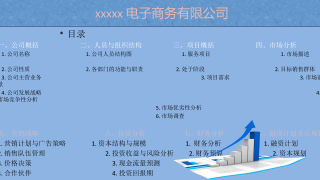
 2025-01-09 18
2025-01-09 18 -
xx生鲜APP计划书VIP免费

 2025-01-09 12
2025-01-09 12 -
跨境电商创业园商业计划书(盈利模式)VIP免费
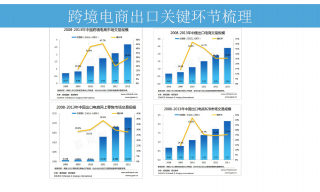
 2025-01-09 8
2025-01-09 8 -
跨境电商计划书VIP免费

 2025-01-09 13
2025-01-09 13 -
绿色食品电商平台项目计划书VIP免费

 2025-01-09 22
2025-01-09 22 -
农产品电子商务商业计划书VIP免费

 2025-01-09 9
2025-01-09 9 -
农村电商平台商业计划书VIP免费
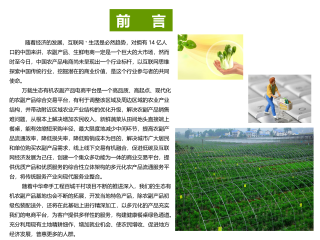
 2025-01-09 13
2025-01-09 13 -
生鲜商城平台商业计划书VIP免费
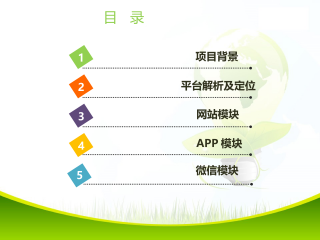
 2025-01-09 21
2025-01-09 21
作者:侯斌
分类:高等教育资料
价格:15积分
属性:58 页
大小:4.85MB
格式:DOC
时间:2024-11-19


